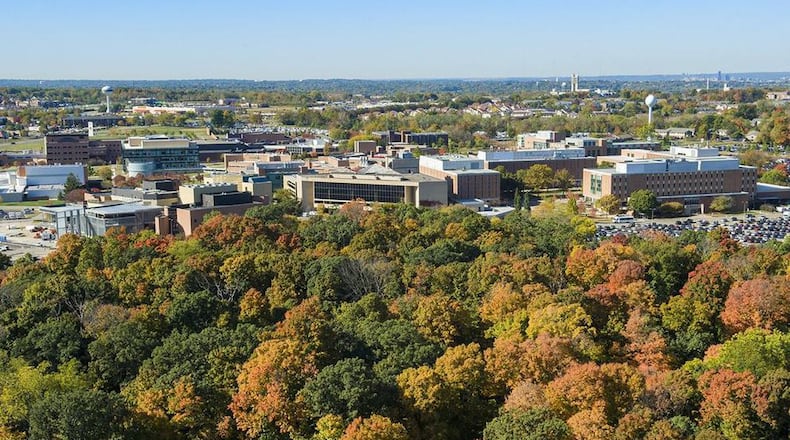Revenues for next year are expected to be about $25.6 million below this fiscal year’s actual revenues, according to documents. In addition, officials are projecting a net operating deficit of $11.7 million for 2021, the document said.
The university has been grappling with it’s budget because of declining enrollment in recent years, and the COVID-19 pandemic has added to the financial woes, officials have said. In June, school leaders expected a budget surplus of $1 million by the end of the current fiscal year, however, long-term demographic, educational and enrollment trends are not on the institution’s side, Greg Sample, the university’s chief operating officer said at the time.
Officials budgeted for $210.2 million in total revenue and operating expenses in fiscal 2021, down from revenue of about $257 million this fiscal year.
The university’s enrollment has declined steadily since 2016, long before the COVID-19 pandemic, Sample told trustees in a live-streamed virtual trustees meeting in June.
There has been a 12% drop in enrollment from 2017 to 2019, trustees were also told at the time. About 10,700 students were expected for this fall semester on the main Fairborn campus, which was built for about 20,000 students.
The university will sell the Cox Center in Fairborn and another building at 3171 Research Park Blvd. in Dayton for a combined $3.5 million, Sample said Monday. The properties were identified to be vacated as part of the university’s overall strategic consolidation aimed at reducing expenses, he said.
Currently, WSU operates the Boonshoft School of Medicine Departments of Population and Public Health Sciences, Geriatrics and Emergency Medicine and emergency medicine simulation labs at both properties. School officials will spend about $1.2 million from the sale to relocate those affected departments to a new location, which has not been determined, Sample said, noting that he anticipates the moves to occur early next year.
The remaining $2.3 million of the sale proceeds is slated to go to reserves. The sale of both buildings to Kettering Health Network will be finalized in 30-90 days, he said.
Reached for comment about the impending sales, KHN said in a statement: "We are aware of Wright State University’s board of trustees approval and will release more information at a later time.”
In addition, the trustees approved a resolution authorizing four parcels of land to be transferred from Double Bowler Properties Corp. to WSU. Double Bowler is the university’s private nonprofit real estate corporation, which was formed to manage certain real estate investments for the school. The parcels are:
- Thirty-eight acres near the Lake campus. The undeveloped acreage was purchased to allow for the future expansion of the lake campus.
- Two vacant residential lots near the Duke Ellis Center in downtown Dayton. The lots were purchased to allow for the possible expansion of the parking lot at Duke Ellis.
- The National Center for Medical Readiness, also known as Calamityville. The property is the former Cemex plant, and is actively operated by the university to host a variety of medical readiness training for various organizations.
“There is no cost associated involved,” Sample said. “The properties are simply being transferred, it’s essentially a paper transaction.”
About the Author
